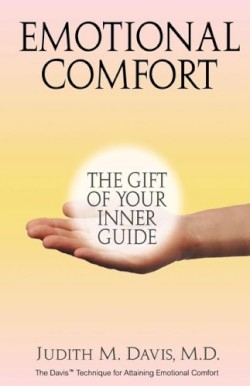Emotional Comfort
What fusion does for cuisine, and crossover for musicians, the author does for self-help in this remarkable book. A Chicago psychoanalyst, Davis developed her theory of mind by combining ideas of Sigmund Freud and Ivan Pavlov. She builds a therapy based on self-hypnosis, assuming that the “Inner Guide” is a reservoir of comforting experiences and solutions to conflicts that people can learn to tap.
Freud emphasized the unconscious as a source of trouble, a collection of memories and impulses that must be repressed, perhaps until expertly uncovered in long-term therapy. Davis takes a different view, insisting that there exists a self-comforting mechanism that can be engaged by willing it and by practicing self-hypnosis patiently, regularly and, for the most part, enjoyably. The Inner Guide is a part of the self with a separate identity, and it can and must be trusted to make the right decision with the right timing. “As you gradually realize this,” she writes, “you learn that you can absolutely rely on your Inner Guides judgment and its power to help you.”
Davis regards psychiatric symptoms such as anxiety and depression as partial or false solutions to overwhelming emotional challenges. For example, excessive eating may be a self-comforting habit that initially lessens stress but eventually compromises the persons adjustment, health, and self-esteem-a faulty solution. A time may come when distress caused by the false solution exceeds that of the original trauma or problem. For example, a lonely, frustrated overeater first got a wakeup call from her unconscious when she sat down to eat but forgot her fork. Her dilemma-you may / may not eat-was a sign from her Inner Guide that this person was ready for change. The Davis method accelerates such change with self-hypnosis to enhance receptivity by using, not analyzing, an internal, complex, benign stimulus.
At times this sounds like quick-fix nostrum, but Davis does not promise easy or instant magic. What makes this a challenge to skeptics is the combination of her experience, theoretical clarity, and confident optimism, bolstered by a decade of working with people who used the method. More than a treatment of symptoms, it offers help with quality of life issues: getting organized, taking care of oneself, being creative, and loving more fully.
Time will tell whether this is revolutionary or just a good stepping-stone to self-improvement. Meanwhile the Davis technique reassures like Richard Wilburs poem Walking to Sleep: “As a queen sits down, knowing that a chair will be there, / Or a General raises his hand and is given the field glasses, / Step off assuredly into the blank of your mind. / Something will come to you.”
Reviewed by
E. James Lieberman
Disclosure: This article is not an endorsement, but a review. The publisher of this book provided free copies of the book to have their book reviewed by a professional reviewer. No fee was paid by the publisher for this review. Foreword Reviews only recommends books that we love. Foreword Magazine, Inc. is disclosing this in accordance with the Federal Trade Commission’s 16 CFR, Part 255.

